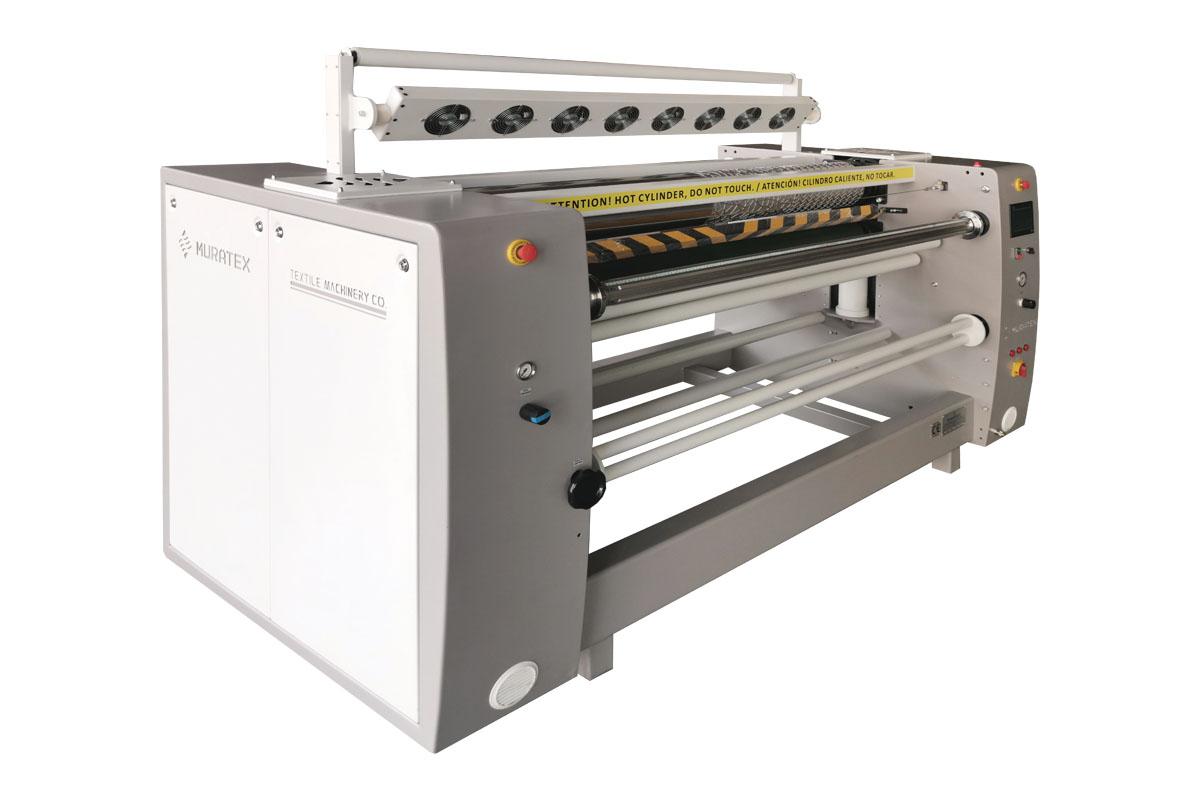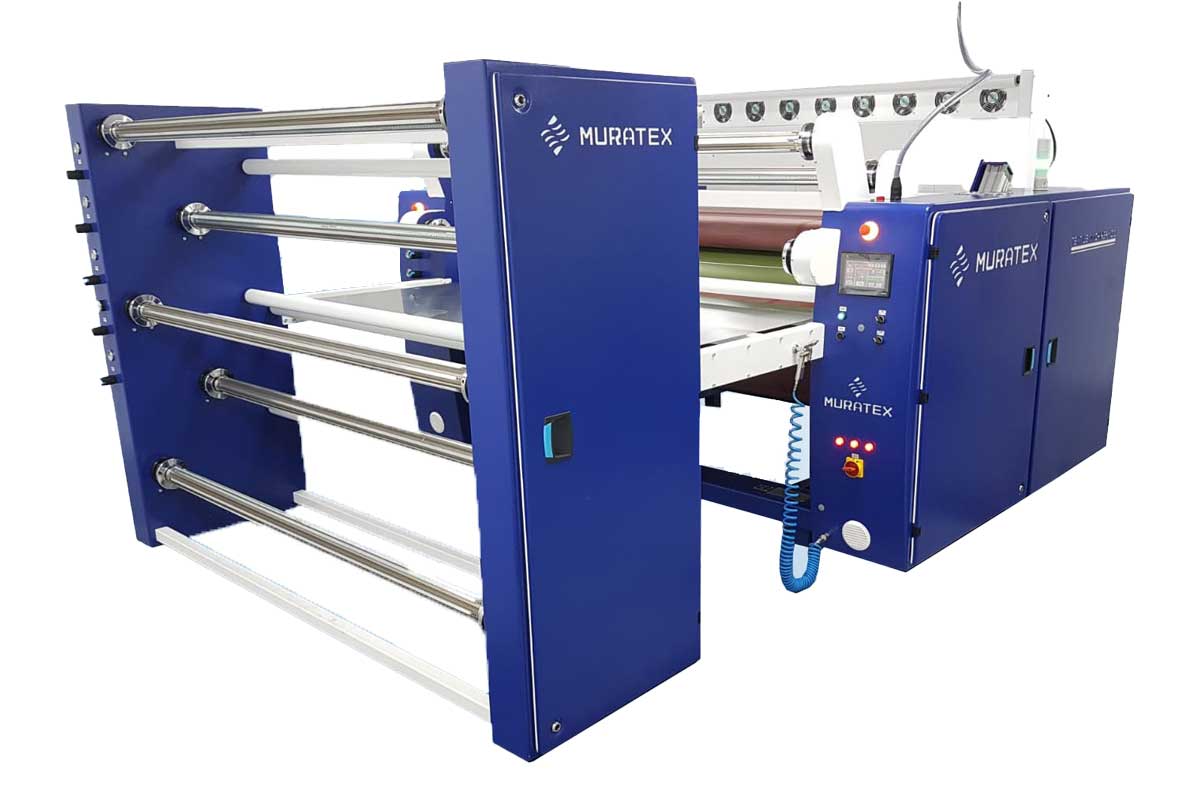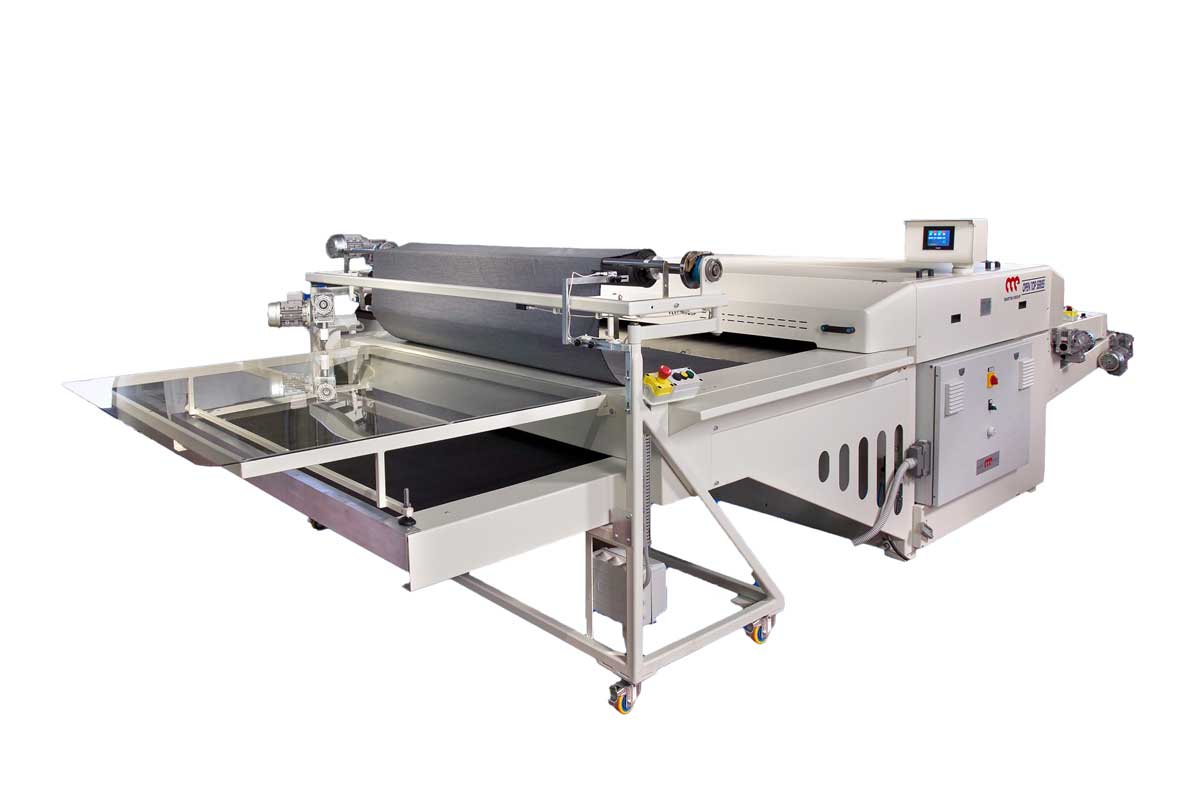These fabric embossers and debossers, used largely in the fashion, furnishing and home textile markets, are flexible and, simply by installing a different type of cylinder, can carry out a foiling or cire process, with the latter providing a waxed or polished look to a product. In certain cases, bonding and embossing can be achieved as part of the same product processing.
The embossing cylinders are relatively easy to change within the workplace environment, giving you lots of opportunity to explore different options. There is also a myriad of existing designs you can choose for your cylinder and the engraving price is included in the initial machine costing.
What is embossing?
Generally, embossing is a process employed to attract attention or convey a high-quality textural contrast, in relation to the surrounding area of the finished product. In some cases, embossing can also be used to improve the performance of some products.
Embossing or debossing alters the surface of paper, fabric and other substrates, such as membranes, by providing a three-dimensional, raised or lowered effect on selected areas and can often be used in combination with foil stamping, in some industries.
Our EM series of fabric embossing machines are designed to blind emboss (without ink), although they can also be used for other similar processes, including foiling.
How does embossing and debossing fabric work?
The fabric embossing or debossing procedure uses of one of two roller types, one that is raised or one that is recessed. Our EM series of machines is designed to use either a raised or recessed roller, in conjunction with a rubber or similar roller, to produce the effect on one surface of the product. The raised die roller forces the product into the rubber roller and creates the debossed effect; still known as embossing in some industries; whereas the recessed die roller creates a raised emboss effect on the product surface.
A specific level of pressure and heat is applied to the embossing roller in order to squeeze the fibres of the product, which results in a permanently raised or lowered area in the finished product.
Success is embossing and debossing can be achieved by acquiring a thorough understanding of the process and by engaging in product testing. Of course we, and our demonstration area here at i2Europe, can assist with all of this.
The main areas that need to be considered during the embossing process are:
- Pressure: how much and how pressure can affect the product. Thinner products are less affected by embossing pressure than thicker ones, but good results are still achieved.
- Heat: the ability to maintain a consistent heat level for the production process is essential. The heat applied must be sufficient to enhance the emboss, without unduly affecting the finished product surface.
- Die depth: the density of the design will initially determine the die depth. However, if after looking at the artwork, it appears that an adjustment of the die depth may be necessary, the design may need to be re-sized to achieve a greater depth. Most types of product can be embossed, the extent of this depending upon their thickness.
What else can fabric embossers and debossers do?
Increasingly, the team at i2Europe is being asked to test a myriad of different products on the machine – and with very exciting results! Don’t just think fabric!
This opportunity to check whether your products are suitable for embossing, or test your designs out, can easily be arranged. Please feel free to contact us, to fix up a demonstration or product testing session at our demonstration facility in Lancashire.
Options in the fabric embossing and de-bossing equipment range
- working widths up to 3200mm, depending upon the design
- the design on your embossing cylinder can be either raised or recessed, to suit your product
- your custom cylinder design can be engraved onto the cylinder, all we need is a CAD drawing and a few other details. This engraving service is very competitively priced even for multiple design cylinders.
- a hoist frame can be added, to ease the cylinder changing process, or to assist with product loading and unloading
- custom machine layouts may be possible, to suit your work environment
To find out more about our embossing and debossing machines, please use the details on our ‘contact us’ page.










